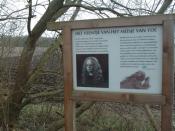What they tell usÃÂ clothing- fabrics, fashion etc. hairstyles.ÃÂ physical diseases ÃÂ what was around and how they treated it. Also height and physical things. Punishment and ritual killing.. how and why . day top day thingsÃÂ food, tools invented etc.
In Europe and Britain, in areas of boggy, marshy soil, several well-preserved bodies have been found. They were prevented from decaying by the airless conditions of the bog. Due to their excellent preservation, they tell us many things about the past. We learn about punishment and human sacrifice, fashion and materials used, hairstyles and jewellery, physical diseases and how they treated them, diet, and tools and materials used. They have very much enriched our understanding of their time and culture.
Almost all the bodies discovered show evidence of violence and murder, giving us clues about methods of punishment, sacrifice and festivals. For example, Elling women was hung by a leather thong which left a V-shaped furrow that is clearly visible in her neck.
The leather belt that was used to hang her still survives. It has a sliding knot, making it suitable for execution purposes. This happened in the pre-Roman Iron Age, between 350 and 100 B.C. In 1879 the body of an adult woman was found in a bog near Ramten, Jutland in Denmark. The body, known as Huldremose Woman, was very well preserved. The woman met her violent end sometime between 160 B.C. and 340 A.D. Her arms and legs showed signs of repeated hacking, and the diggers who found her body noted that her right arm was detached from the rest of her body. That arm was evidently cut off before she was deposited in the peat. Yde Girl died a violent death sometime between 170 B.C. and A.D 230. The woolen band around her throat...


